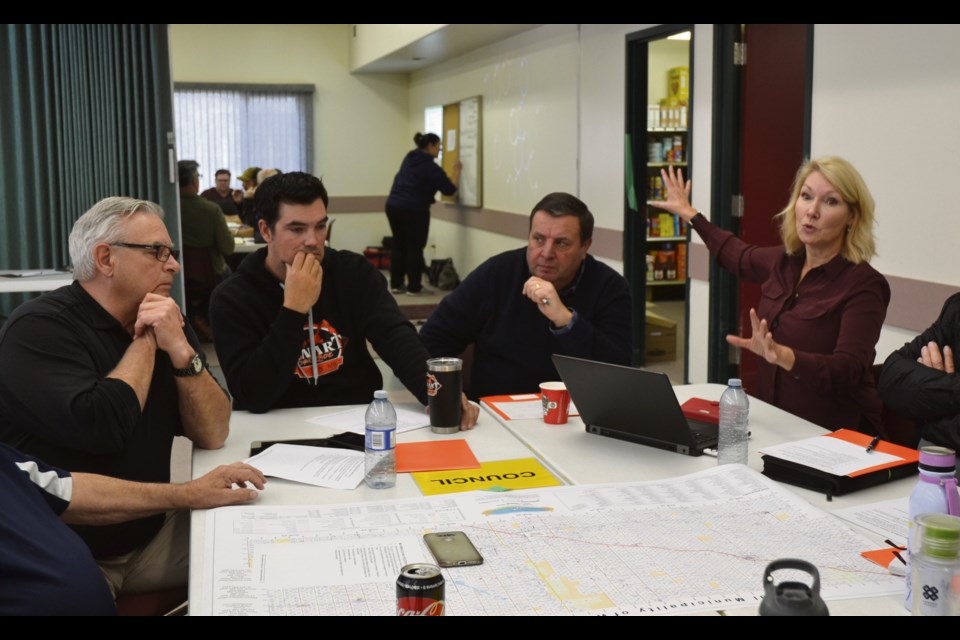While you were enjoying last Saturday’s mild fall weather, 25 local volunteers spent the day inside learning how to save your life in a disaster.
Westman Emergency Group (WEG) leaders and volunteers gathered at Sacred Heart Parish hall for the day-long training directed by Napier Emergency Consulting of Winnipeg.
Napier’s Paul Kentziger outlined the premise of the simulated disaster - a truck and a train have collided at the rail crossing on PTH 257 near the high school.
Anhydrous ammonia liquid is leaking from a ruptured tank and has become a deadly airborne gas. People in the immediate area are in grave danger as well as those downwind.
The volunteers are assigned roles to play in each of four groups that would be involved in such an accident, and they must all communicate effectively by phone with each other under extreme pressure.
In one room of the parish hall, a few volunteers become emergency responders at the crash scene. At the other end is the emergency operations centre. In the middle of the hall are local government officials portraying themselves, and the fourth group represents all the outside resources that might be called on for help.
As the exercise begins, phones start ringing around the hall with team members placing calls for ambulances, EMO, evacuations, CP rail, the chemical company, and to each other.
“This is Constable F. at the scene here, we need some road blocks around the perimeter...”
“The gas cloud is coming from the northeast moving southwest. Can you check with Environment Canada to see if there’s any weather changes coming…”
“Can you order an ambulance for me?”
“How do we get buses to evacuate people? It’s Saturday…”
“Tundra Oil and Gas Place is too close to the gas cloud, where else can we send the evacuees?”
Kentziger mingles from group to group. He observes, listens in and assists when the volunteers are unsure what to do.
“The hard part is away from the accident scene. The firefighters know what to do at the scene and how not to die. But where do you send the people, who feeds them, what about their pets or their medication?” says Kentziger.
For more than three hours, as new information is fed to them by the Napier coordinators, the volunteers react to changing circumstances.
Even without the benefit of mock disaster props like a rolled over truck and emergency vehicles, participants in this exercise are fully engaged in responding to the evolving threat.
Afterwards, WEG co-manager Matt Hipwell says the training was critical so volunteers will be ready if a real incident happens.
“Being able to test the functionality of our group in a controlled environment is an excellent way for everyone to identify strengths, weaknesses and shortcomings.”
“The feedback from all of those involved was very positive and allowed new volunteers to experience what a potential emergency could be like.”
A few volunteer positions are still open and WEG invites inquiries.




